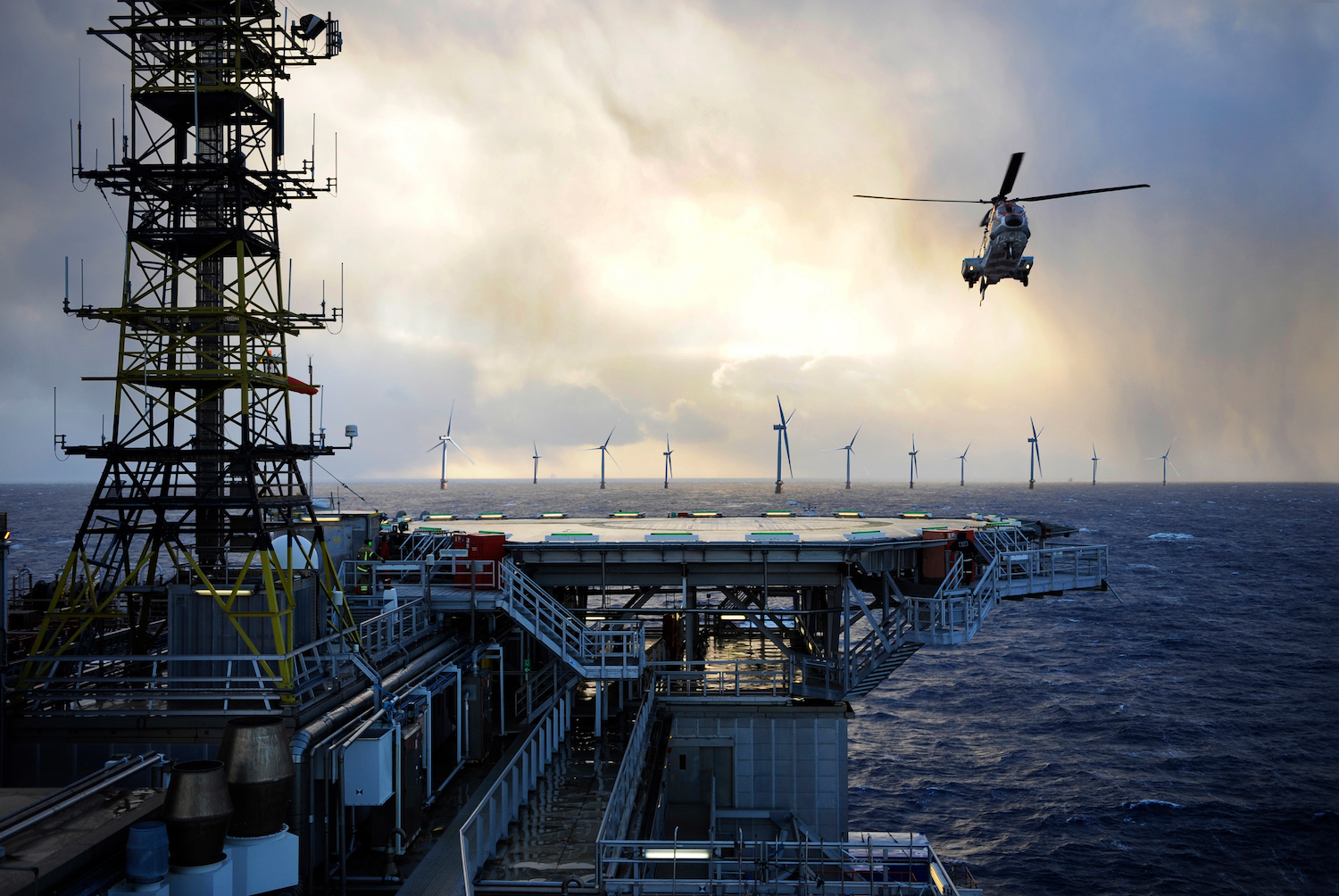“This is very exciting news. We provided anchoring systems for Equinor’s Hywind pilot project in Scotland and are keen to play a role in the development of this new project,” says Høye Høyesen, CEO of MacGregor Norway.
READ MORE: GCE NODE companies: “We are ready!”
At ONS Tuesday, Equinor and partners at oil fields Gullfaks and Snorre revealed plans to explore the possibilities of supplying Gullfaks and Snorre with power from floating offshore wind. This could be the first time an offshore wind farm is directly connected to oil and gas platforms.
The project forecasts a reduction of CO2 emissions by more than 200,000 tonnes per year, equivalent to the emissions from 100,000 cars.
Equinor has performed an extensive study evaluating which oil and gas installations on the NCS are suited for power supply from a floating offshore wind farm. The Snorre and Gullfaks fields in the Tampen area in the northern North Sea are the best match for realizing this idea.

“Reducing the use of gas turbines by supplying platforms with power from floating offshore wind is a challenging and innovative project. It may also facilitate new industrial opportunities for Norway, Equinor and Norwegian supply industry within profitable renewable energy, while enabling oil and gas production with low CO2 emissions. The Hywind Tampen project is contributing to further developing floating offshore wind technology, reducing costs and making the solutions more competitive,” says Equinor’s executive vice president for New Energy Solutions, Pål Eitrheim.
11 WIND TURBINES
The solution to be further explored is a wind farm consisting of 11 wind turbines based on Equinor’s floating offshore wind concept, Hywind. The 8 MW turbines will have a combined capacity of 88 MW, and are estimated to meet about 35% of the annual power demand of the five Snorre A and B, and Gullfaks A, B and C platforms. In periods of higher wind speed this percentage will be significantly higher.
“I am pleased that the partnership has managed to mature this from an idea to a concept choice. In order to maintain profitable operations on the NCS in the long term, it is essential that we do our utmost to further reduce the carbon footprint from our activities. The Tampen project will make a considerable contribution to the industry’s ambition to reduce CO2 emissions on the Norwegian continental shelf by 2.5 million tonnes per year from 2020 to 2030,” says Equinor’s executive vice president for Development and Production Norway, Arne Sigve Nylund.
NOK 5 BILLION PROJECT
The preliminary capital and development expenditures of the project totalling about NOK 5 billion, and the project aims at further cost reductions. The industry’s NOx fund confirms to provide up to 566 million NOK in investment support for the project. In addition, Norwegian authorities have through their offshore wind strategy and Enova opened for financial support for innovative offshore wind projects associated with the oil and gas industry. The Snorre and Gullfaks partners have applied for support from Enova’s programme for full-scale innovative energy and climate measures to realise the project.
“The partners have now made a concept choice for an offshore wind farm tied in to the two fields. This is still a groundbreaking and challenging project that requires optimisation of the technical solutions and further cost reductions before the partners can make a potential investment decision,” says Equinor’s project director, Olav-Bernt Haga.
The seven Snorre and Gullfaks partners in the Tampen area in the North Sea will now mature the project towards a possible investment decision in 2019.





